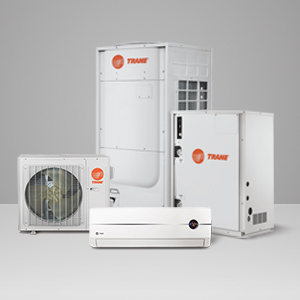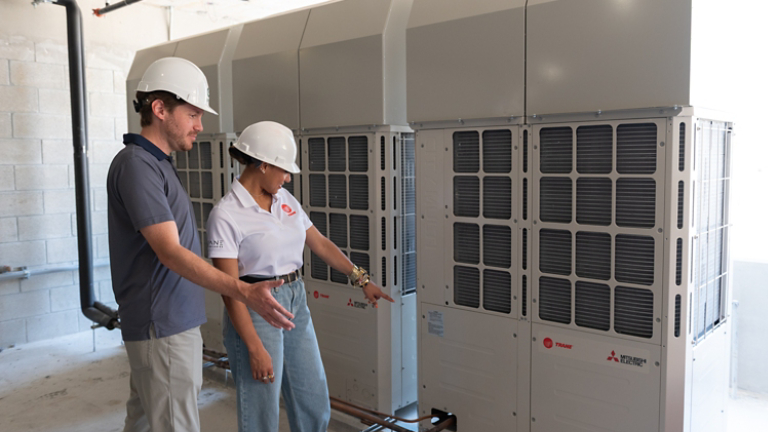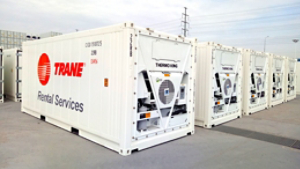
Ductless Offers Great Energy Cost Savings
As energy costs rise around the country, along with increased consumer awareness and commitment to energy efficiency, we are seeing more and more ductless systems installed. About 60 percent of the units installed currently supplement an existing traditional HVAC system especially in older buildings without room for expanded duct work, and 40 percent are going into new construction projects to be the primary air conditioning or heating.
Trane Ductless
Trane® ProSpace™ Ductless Solutions offer three different types of ductless systems: mini-split, multi-split and variable refrigerant flow (VRF). Once you’ve selected the solution that works best for your needs, you’ll need compatible indoor and outdoor units to complete your ductless HVAC system.
Efficient engineering and zoning
A ductless system saves energy and cost in a couple of major ways: first, they use less power. Temperature-controlled air is delivered directly to the space, with no loss along the way. Because a ductless heat pump system transfers heat instead of generating it, they use up to 60 percent less energy. On the cooling side, costs are cut about 30 percent because of a more sophisticated compressor and fan system than is more specifically adjusted and reset based on needs. Finally, many ductless systems are split, allowing facility managers to create zones of heating and cooling based on need and use. So long as you take care to manage the needs of each individual zone, a ductless split system is the most efficient HVAC option.
Energy Star & Tax Credits
Energy Star® certified products can further cut costs, and all Trane ductless units have this important designation from the Environmental Protection Agency.
In addition to the savings on utility costs, businesses (and homeowners) are often eligible for tax credits and utility rebates for installing a ductless system. There are many programs at the federal, state and local level to take advantage of additional savings.
In addition to saving money on utilities, homeowners may also be eligible for tax credits or utility rebates for the year they install a ductless system. There are many programs at the federal, state and local level that allow homeowners and businesses to take advantage of these additional savings.
SEER ratings
SEER stands for seasonal energy efficiency ratio and measures the amount of energy a cooling system uses compared with the amount of cooling it provides. The higher the SEER, the more efficient the system is. Baseline SEER ratings start as low as 13 SEER, and now go as high as 21. Federal regulations determine by region the SEER minimum standard and you should discuss your requirement with your local HVAC contractor. As an example, Florida, land of air conditioners, requires a minimum standard air conditioning SEER of 14.
Each point of a SEER rating translates to upto a 10 percent energy reduction increase. So that means a 38 SEER systems operational cost is approx..70 percent less than one of a 14 SEER rating!
Trane ductless systems range from 16-38 SEER.
Ductless systems are incredibly common in Europe and Asia, where buildings are older and design aesthetics are different. US consumers aren’t used to seeing floor or wall mounted units, and seem to prefer barely noticeable vented systems. However, ductless systems are becoming more common as the installed costs have come down and many of the units are either concealed or esthetically pleasing now. And with the remarkable energy cost-savings, they are becoming much more desirable.
Want more product information? Click here to go to the ProSpace ductless page or here to contact a sales office.
And if ductless isn’t right for you, Trane® has a host of other offerings available here.





































































































